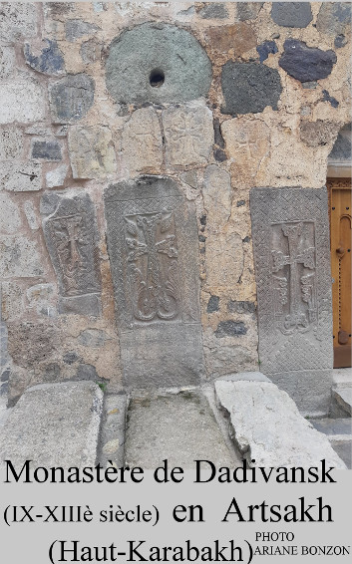War was not supposed to happen again in Europe. For decades, children had been taught in schools across the continent of the horrors perpetrated by Nazis and Fascists and Communists, by foreign invaders and domestic collaborators. Yet despite all this, in the early 1990s Yugoslavia was once again the scene of war and slaughter while Europe, and the world, looked on helplessly. History was not only not over ; it could repeat itself.
Appalling war crimes and crimes against humanity were committed in the wars that resulted in the breakup of Yugoslavia. In Bosnia and Herzegovina alone some 100,000 people were killed between 1992 and 1995, and many more were wounded and displaced. In this catastrophe of human suffering, the killers came from all sides—Bosniaks, Serbs, and Croats— and no side was spared, although the Bosniaks suffered most of all.
One particularly horrific act of carnage stands out among the many : the July 1995 massacre at Srebrenica, where around 8000 Bosniak men and boys were killed by the Republika Srpska army commanded by Ratko Mladic. At the time, the town was a United Nations safe area. The 400-strong UN battalion, manned by Dutch soldiers, that was guarding it proved incapable of preventing the atrocities. Four years later, the then Secretary General of the United Nations Kofi Annan wrote, “Srebrenica is the biggest shame in the history of the United Nations.”
Fifteen years have passed since that act of genocide. On July 11, the commemoration at the Srebrenica Memorial Center in the village of Potocari brought together thousands of people, from foreign dignitaries to the families of 775 newly-identified victims (whose total number now stands at about 6500).
Neither former Yugoslavs nor the international community have forgotten the horrors of the crimes committed. In June 2004, the government of the Republika Srpska, one of the two entities comprising Bosnia and Herzegovina, published its own formal investigative report. It is largely forgotten, but is nonetheless a well-researched and detailed document outlining the events that occurred and naming the individuals responsible.
On February 26, 2007, the International Court of Justice (ICJ) in The Hague defined the massacre at Srebrenica as genocide in a ruling on a claim brought by Bosnia and Herzegovina against the Serb-dominated Federal Republic of Yugoslavia. It did not hold Belgrade responsible for that genocide but ruled that its authorities “should have made the best effort within their power to try and prevent the tragic events then taking shape.” The court also underlined that genocide did not occur anywhere else in Bosnia and Herzegovina during the 1992-95 conflict.
Nonetheless, Serbia’s new democratic government has not been idle with regard to its responsibilities. President Boris Tadic went to Srebrenica on the occasion of the 10th and again on the 15th anniversary of the Srebenica massacre, to pay tribute to the victims. Earlier this year, in March, the parliament in Belgrade found it within itself to approve the Declaration on Srebrenica, referring directly to the February 2007 ruling of the ICJ, and unequivocally condemning the war crimes and the politics that led to them. It also apologized to the families of the Bosnian Muslim victims and expressed their condolences.
The declaration also reiterated Serbia’s determination to arrest Ratko Mladic who, regrettably, remains at large. Two years ago, Serbia arrested Radovan Karadzic, the former President of the Republika Srpska, and sent him to the International Criminal Tribunal for the Former Yugoslavia (ICTY), where officers of the Army of Republika Srpska were convicted for the genocide in Srebrenica. Serbia would do well to intensify the hunt for Mladic and thus help fulfill its obligation towards the ICTY.
The confrontation with a past of war crimes committed in the name of a nation and its citizens is a complex and lengthy process that must be pursued for the sake of reconciliation, peace and democracy. It has two tracks. The first is justice, international and domestic. International justice has been meted out principally at the ICTY and ICJ, while domestic justice is dispensed at special war crimes tribunals in Serbia, Croatia and Bosnia and Herzegovina, set up around the turn of the millennium.
The second track is more complicated : a society facing up to itself. But how does a society come to terms with what was done in its name ? Historical precedents - such as Germany, Japan, Argentina or Spain - teach that this requires time, perhaps even the passing of generations.
It is for the democratically elected leaders of Southeastern Europe to pursue reconciliation and the rebuilding of trust. But this means, first and foremost, recognizing the crimes committed against other communities while appreciating that this in no way diminishes the suffering that one’s own nation has lived through. It requires continuous efforts by the state, civil society and journalists to discover the truth behind the most painful episodes of war.
All this is now being done in the Balkans - but it must be consistently pursued, whatever the political, social and economic obstacles, for the sake of a more stable, democratic and peaceful future in the European Union. As for the massacre at Srebrenica, the single bloodiest crime during the Yugoslav wars, it is essential that we never cease remembering that horrific crime and its victims.

